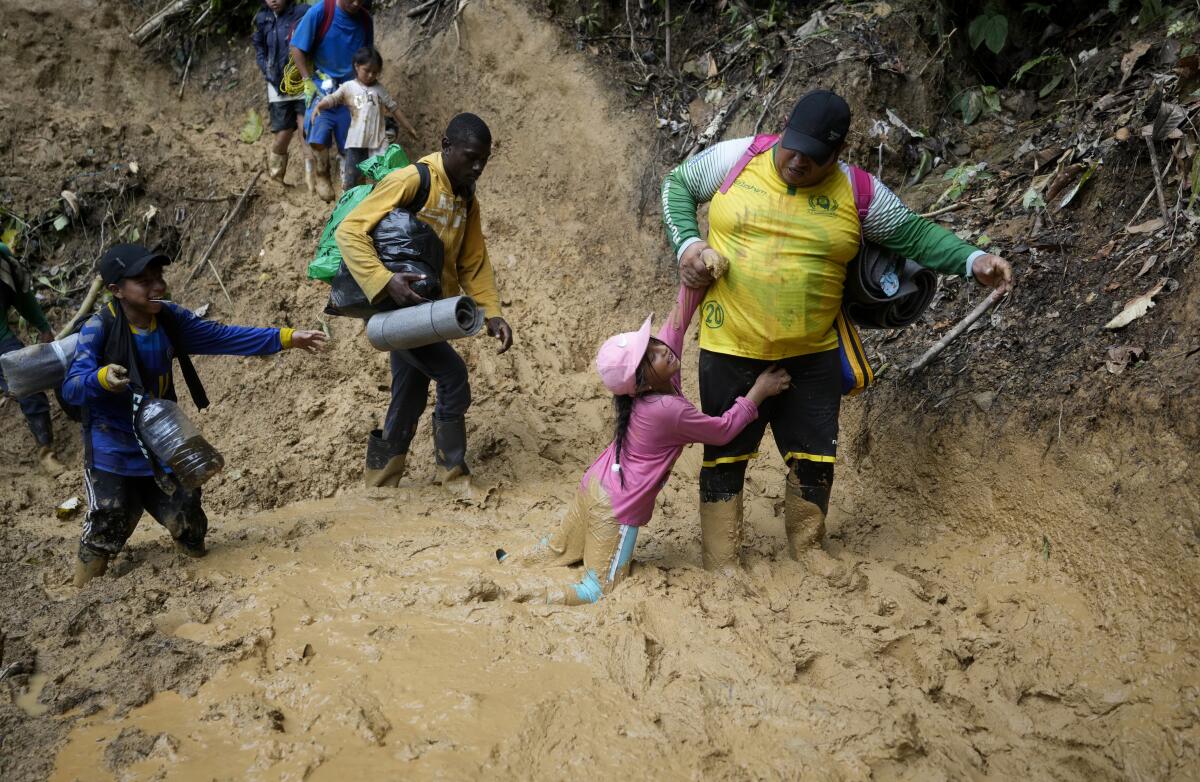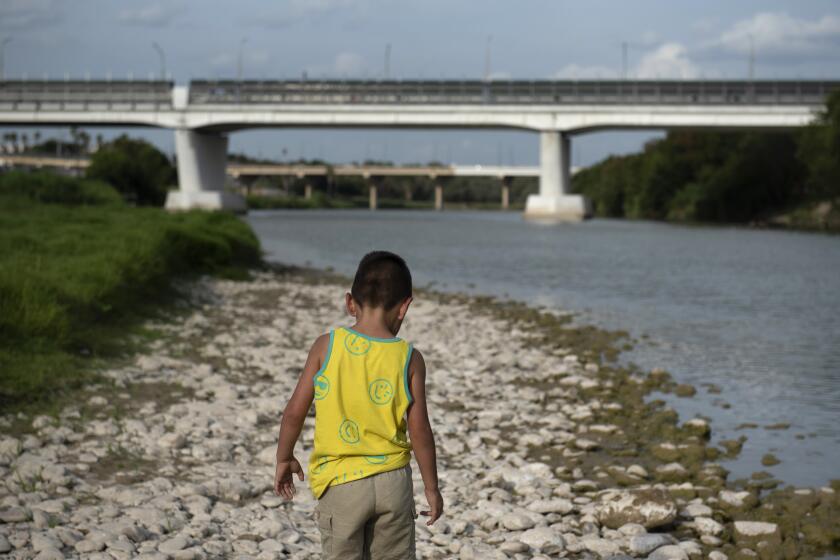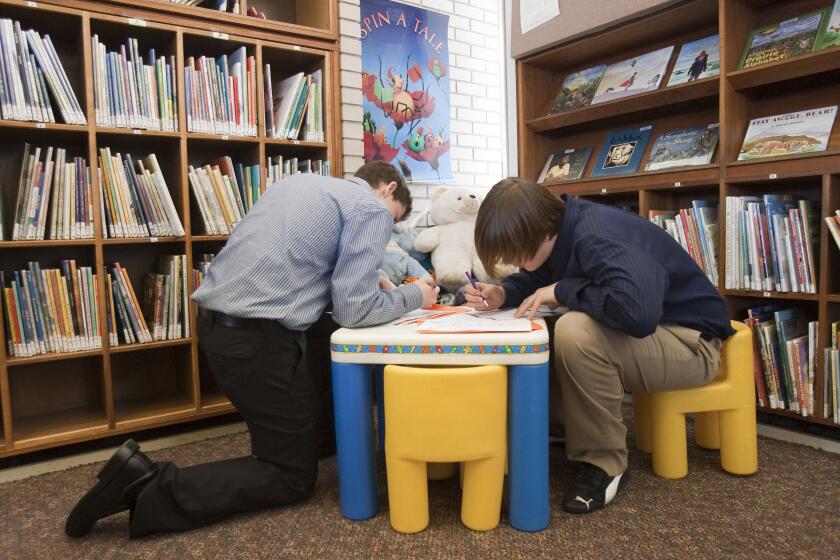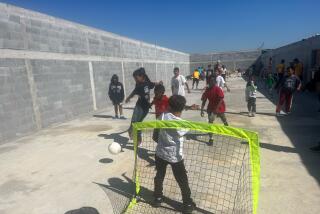Opinion: Our failed immigration policy is causing a child labor epidemic in the U.S.

- Share via
Children are now mainstays in migration policy debates and news, with unaccompanied minors at the border drawing much attention over the past decade.
The systemic violence and poverty that displace thousands of children from Central and South America have a long history. While these factors have only worsened in recent years because of climate change, environmental degradation and the human and economic costs of COVID-19, they follow decades of destructive U.S. intervention in the region — and of our inability to reform our immigration system.
The U.S. government’s failure to pass significant immigration reform since 1986 is one reason children end up as workers. U.S. policies haven’t kept pace with the high rates of displacement from migrants’ countries of origin, nor our need for workers. Without pathways for legal migration, many families, individual adults and unaccompanied children have little choice but to migrate without authorization and remain so long term; 2019 data indicate that 62% of undocumented migrants have been in the U.S. for at least 10 years.
Immigrants in the U.S. report high levels of on-the-job discrimination. Among those who are likely undocumented, it’s even worse.
While undocumented, immigrants lack social security numbers and work permits, making them vulnerable to low wages and workplace violations, including wage theft and verbal and physical abuse. If they push back, they risk job loss at best and deportation at worst.
These conditions encourage the morally unconscionable — and until recently largely ignored — labor exploitation of child migrants under the age of 18. Under such poor working conditions, some adults are unable to make ends meet and rely on their children’s work to do so.
The unaccompanied minors who cross the border each year — in 2021 and 2022, the government released more than 100,000 — face particular challenges. Some arrive at the doorstep of relatives or other immigrant adults who can’t afford to take them in, so they must find a way to support themselves. Others get sponsored by nonfamily members who may exploit them for labor. Dozens of child welfare caseworkers estimate that around two-thirds of unaccompanied migrant children end up working full time, according to a New York Times investigation.
Residents of Laredo, Texas, and other towns at the U.S.-Mexico border along the Rio Grande, get left by the wayside in state and national policy.
The stories of child migrant laborers are harrowing. They take on late-night, early-morning or 12-hour shifts that keep them out of school. They work on farms, at garment and food manufacturing factories as well as meat and processing plants, in construction and sawmills — often dangerous jobs with few protections.
Despite media portrayals of this system as a new economy, historian Ivón Padilla-Rodríguez has documented that the success of industries such as agriculture, manufacturing and construction in the Southwest relied on child labor as far back as the early 20th century. My dad arrived in Los Angeles from El Salvador as a 17-year-old in the 1970s. He immediately became a garment worker in denim factories across downtown Los Angeles and later installed carpet for a man who refused to pay him.
Los Angeles remains a center for this problem. My research studies the lives of undocumented young adults who arrived in the U.S. as unaccompanied minors from 2003 through 2013 and now live in L.A. I’ve spoken to children who have worked in garment factories that sew clothes for companies including Forever 21, J. Crew and Old Navy. Others worked in hotels such as the Ritz Carlton downtown or cleaned the homes of the rich and famous as live-in domestic workers.
Given my research focus, I often get asked what the government is doing about this child labor epidemic and what regular people can do about it. My response: It depends how far you want to go.
Trying to make up for the labor shortage by hiring teens to work long hours under limited protections could shift those young workers’ energy from school, making it more likely they will drop out.
Perhaps counterintuitively to many Americans, part of the equation is paying attention to these youth before they cross our border by granting them what anthropologist Lauren Heidbrink and other scholars identify as “el derecho a no migrar” — the right not to migrate.
Young people need alternatives to migration to make a living. That shouldn’t mean aiding foreign governments in deporting migrants, as the Biden administration recently pledged to aid Panama’s government. It should mean investing in community-based programming to integrate children into their home society, such as Colectivo Vida Digna in Guatemala, which aims to reduce youth migration by supporting Indigenous teens and their families in reclaiming Indigenous cultural practices and strengthening communities so they can build futures without leaving their home country.
Even with those programs, some children will migrate to the U.S. and need shielding from exploitation. That may sound uncontroversial in theory, but the current policy landscape shows little willingness to widen the social safety net in practice, even for children and youth.
This is ‘welfare to work’ all over again. Next kids will be forced to choose between working long hours on a school night or losing their food stamps.
Take, for example, that last month a federal judge ruled illegal, but declined to end, Deferred Action for Childhood Arrivals, a program implemented by executive order in 2012 that offers work authorization and a stay on deportation for undocumented youth brought to the U.S. as children. Courts have debated the policy for more than a decade, and with the Supreme Court expected to review the policy a third time, even these longtime U.S. residents — once touted by President Obama as “talented, driven, patriotic young people” — are left in limbo.
Then there’s the immigration program meant to provide vulnerable immigrant children a path to lawful residence and citizenship: the Special Immigrant Juvenile Status designation created in 1990. A recent report found that it has produced “avoidable delays, inconsistent denial rates, and a growing backlog” of petitioners, putting unaccompanied youth’s lives “on hold” and leaving them vulnerable to exploitation and abuse.
All the while, states across the U.S. are actively moving to weaken child labor laws for all children, immigrants or not.
Children’s futures are under threat in the U.S., and stalled immigration policy is a culprit. Protecting children and child workers requires moving forward on immigration. Failing to do so may haunt us for generations to come.
Stephanie L. Canizales is an assistant professor of sociology at UC Merced and the author of the forthcoming book “Sin Padres, Ni Papeles.”
More to Read
A cure for the common opinion
Get thought-provoking perspectives with our weekly newsletter.
You may occasionally receive promotional content from the Los Angeles Times.














